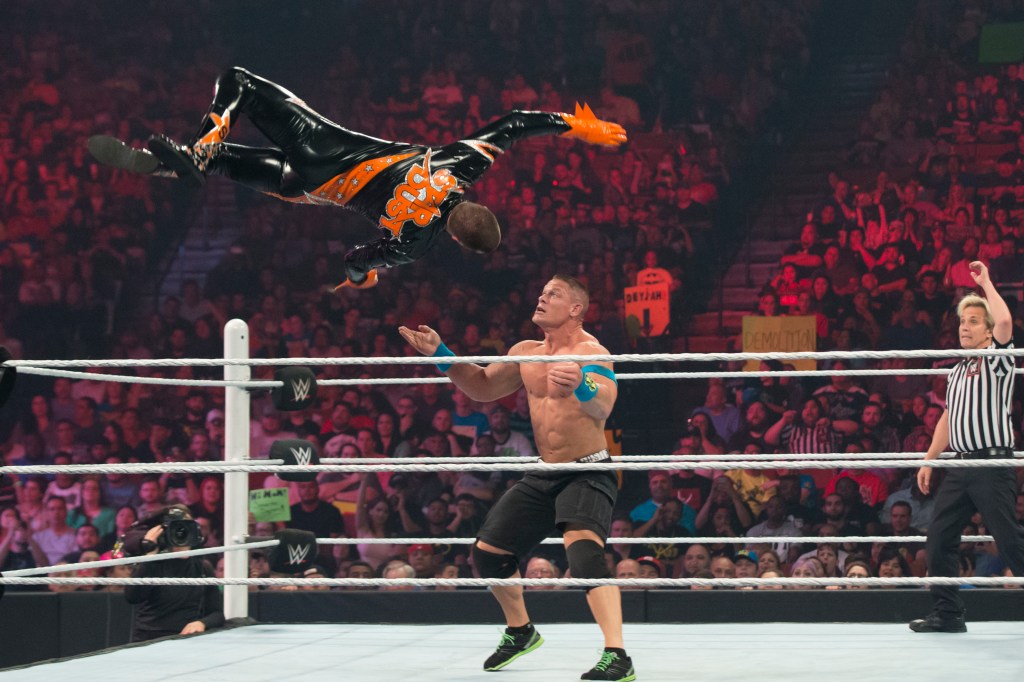Japanese pro wrestling icon Atsushi Onita, best known for having brought the legendarily brutal “Deathmatch” style of wrestling to Japan with his storied Frontier Martial–Arts Wrestling (FMW) organization, is one of the most enigmatic, creative, divisive, and brilliant personalities to emerge from the world of wrestling. As he puts it, wrestling is like music: different genres satisfy different people’s tastes. And to carry that metaphor further, he and FMW, given their love for bloodbaths, barbed wire, explosions, and chaos, are the punk* of the wrestling world.
Onita grew up in Nagasaki, and while he loved wrestling (particularly the hard-brawling Terry Funk), he seemed likely to go into the family business of textiles. But once his father died in 1973, and he realized the financial peril he and his widowed mother now found themselves in, Onita dropped out of high school to became a professional wrestler. He wrote a letter explaining his situation to wrestling superstar Giant Baba, and became the first student at Baba’s newly formed All Japan Pro-Wrestling dojo.
Videos by VICE

He made his debut a year later, at the age of 15. In Japan, wrestling training is incredibly rigorous and disciplined, with a strict hierarchical structure. Onita was a “young boy,” which means he was given very little in the way of individualizing himself in the ring—typically young wrestlers are only allowed to wear black boots and black tights—and his role was to lose to senior wrestlers in the opening matches on the card. Onita spent his early years on his back staring up at the lights, until a trip to the Dominican Republic changed everything.
After Onita refused to lose to someone he deemed a lesser opponent one night in the Dominican Republic, the promoter had Onita jumped by a group of wrestlers backstage. Seriously injured and far from home, Onita went to his childhood wrestling hero Terry Funk’s famed Double Cross Ranch in Canyon, Texas to do farm work and recover. His time at Terry’s farm gave Onita his first exposure to Texas Deathmatch, a style of wrestling featuring brutal matches where wrestlers have to be pinned for a count of 10. Originated by Terry’s father Dory Funk, Jr. in West Texas, the style’s hallmark is immense bloodletting and violence as the wrestlers beat each other senseless. While Onita had seen barbed wire wrestling before his time in Texas, he told VICE that after spending so much time putting up fencing for the cows, the barbed wire began speaking to him. It was clear that Deathmatch was going to be his future.
Once he’d recovered, Funk started booking Onita in Memphis, where the wrestling scene was known at the time for brawls, chaos, and stunts. Onita fit right in, making a name for himself in the 2nd infamous Tupelo Concession Brawl in 1981 at the Tupelo Sports Arena, where the action started in the ring but eventually spilled into the concession stand, leaving the wrestlers a mess of blood, popcorn, and condiments.
Onita eventually made his way back to Japan, becoming one of AJPW’s top junior heavyweight stars. He was so good that it looked like he was headed straight to the top of the card when disaster struck. One night while leaving the ring, he slipped on water and completely destroyed his knee. After spending a year recovering, he was told by his mentor Giant Baba that he would need to retire. So in 1985, just over ten years after he entered the business, his career was seemingly over.
His retirement would last only three years. Onita bounced around between different jobs before serving a short stint in prison for something no one can fully pin down (Onita’s answer changes, depending on when he’s asked). Upon getting out, Onita would start his comeback, which was fully realized after a bizarre fight against karate champion Masashi Aoyagi for the World Karate Association (WKA) in 1989, from which Onita was disqualified for using wrestling maneuvers. The fight lead to the formation of his FMW promotion, as sell-out crowds clamored to see rematches between Onita and Aoyagi.
Now that he had people’s attention, Onita had no intention of letting it go. He placed himself at the center of FMW and a whole new approach to pro wrestling that went heavy on the theatrics (and the exploding barbed wire). Over the next 16 years, FMW would combine classic Japanese wrestling with the brutal, bloody Memphis and Deathmatch styles, and its influence would alter wrestling everywhere.
Eventually, Onita felt a yearning for change, selling the company and retiring again in 1995 to focus on his acting career and finally get his high school diploma. He’d make his return a year later, continuing his career (including another retirement attempt, as well as becoming elected to the National Diet of Japan in 2001 and serving until his political career ended with a scandal involving a threesome with a porn star and an employee of the Ministry of Land, Infrastructure and Transportation in government-provided accommodations) until having double knee surgery in 2018, which he is still recovering from.
Who knows if he’ll be able to come back from double knee surgery to wrestle again, especially at the age of 60? With anyone but Onita, it would seem doubtful, but Onita has a good track record of making the impossible happen.
THE WRESTLERS airs Wednesdays at 10p and 11p on VICELAND.
*Correction 6/27/29: This story originally stated that frontier martial arts wrestling is the “Gwar” of pro wrestling. It is in fact the “punk” of pro wrestling. We regret the error.




